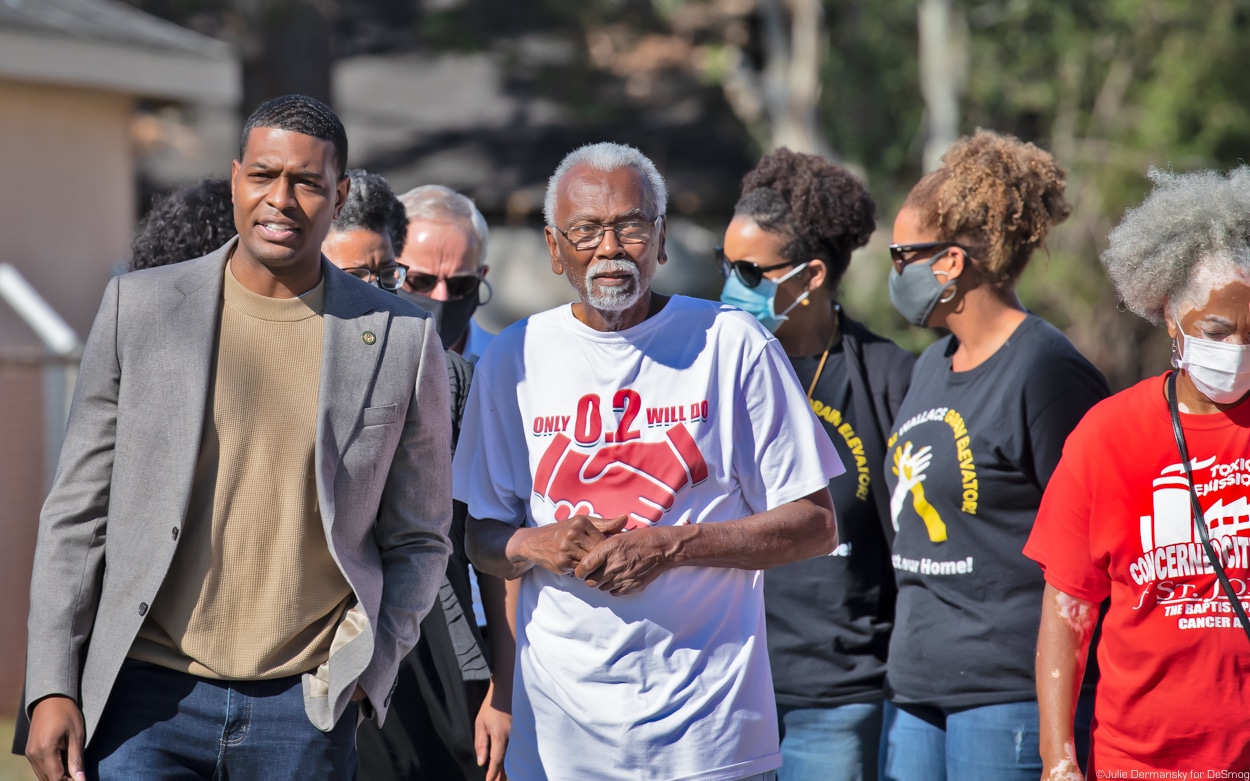After long feeling ignored by Washington, D.C., this week Louisiana Cancer Alley community leaders were elated following a visit from the federal government’s highest ranking environmental regulator, Michael Regan. The U.S. Environmental Protection Agency (EPA) Administrator met with environmental advocates in New Orleans, Reserve and St. James on November 16, as part of his “Journey for Justice,” a five-day listening tour of environmental justice communities in states along the Gulf of Mexico. The EPA tour started in Alabama on November 15 and ended today, November 19, in Texas.
Regan promised community leaders that they will have a seat at the table during national discussions aimed at advancing environmental justice, a Biden administration priority. Though he didn’t elaborate on any specific local actions his agency will take to help those in Louisiana communities suffering from the effects of industrial pollution, he assured them that their concerns are his concerns.

Regan stopped to address the press in front of Reserve, Louisiana’s Fifth Ward Elementary School, located less than a mile from the DuPont-Denka Performance Elastomer plant, a source of toxic air pollution.
He described the experiences community leaders had been sharing with him about their frustrations in trying to reduce air pollution impacts on public health.
“I’m also hearing directly how they have felt shut out from the process and the inability to have access to decision makers at all levels of government,” Regan told reporters.
During Regan’s visit to Reserve, in St. John the Baptist Parish, NBC News reporter Morgan Radford asked if funds were available to improve environmental justice efforts. Regan explained that some of the work wouldn’t require spending money, and that funds were available for the EPA’s environmental justice efforts already. “With the bipartisan infrastructure deal, there are significant resources that EPA has been given to begin to solve more of these kinds of problems,” he said, and if the Build Back Better plan is passed, “more funds could become available in that [AB2] could be used toward insuring environmental justice.” The Build Back Better legislation, a sweeping climate and social policy bill, passed the House of Representatives today but faces obstacles in the narrowly divided Senate.
EPA’s commitments to improve environmental justice include better regulatory enforcement, such as ramping up inspections at facilities in fenceline communities, and ensuring 40 percent of “overall benefits” from federal investments in clean energy and climate go toward historically disadvantaged communities, according to the National Law Review.
EPA Administrator @EPAMichaelRegan tells @MorganRadford that he will work with communities disproportionally affected by climate change: "They have my commitment that I am going to facilitate some of those conversations" pic.twitter.com/DEYKVvI3DM
— Hallie Jackson Reports (@HallieOnMSNBC) November 16, 2021
The stakes are high for the 85-mile-long stretch of the Mississippi River between New Orleans and Baton Rouge, often referred to as “Cancer Alley,” that is lined with more than a hundred refineries and petrochemical plants. Here, predominantly Black fenceline communities are exposed to some of the country’s highest risks of cancer from air pollution, according to EPA data.
On the last day of Administrator Regan’s tour, I spoke to the founders of two Louisiana community groups advocating for clean air in their region.
Robert Taylor leads the Concerned Citizens of St. John the Baptist Parish and Sharon Lavigne heads up RISE St. James. The pair are still savoring Regan’s visit but have tempered their current optimism given the fight ahead. They acknowledge the climb toward environmental justice will be steep in Louisiana. The state’s top environmental regulator, Chuck Carr Brown, and the Democratic Governor, John Bel Edwards, have yet to meet with them in person, despite countless invitations to be given a tour of the neighborhoods like Regan took, let alone acknowledge that their concerns about environmental justice are legitimate.
“What Regan did was unprecedented in the five years we have been fighting for safe air,” Talyor told me by phone today. “We have been rebuffed, ignored, and insulted by Chuck Carr Brown, the governor, and local politicians.
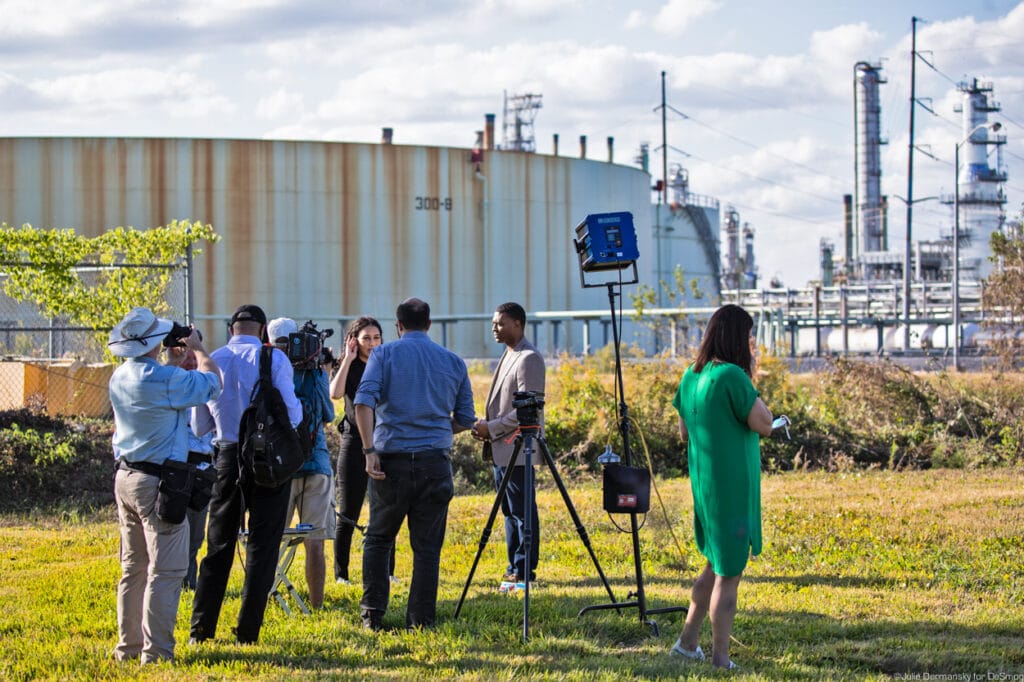
Representatives from the state’s environmental regulatory agencies were not invited to take part in Regan’s EPA tour, but both state agencies told me that they support Regan’s vision. “LDEQ supports the concept of environment justice that EPA is presenting,” Gregory Langley, a spokesperson for the Louisiana Department of Environmental Quality (LDEQ), said by email. “There is an internal work group at the agency looking at environmental equity and ways to incorporate this into all of our areas of authority: permitting, enforcement, remediation, etc.”
“As with all regulatory agencies, we are constantly looking for ways to improve efficiency and responsiveness and are open to suggestions on how to better address concerns such as environmental justice,” Patrick Courreges, communications director for the Louisiana Department of Natural Resources, wrote by email. “Part of our coastal permitting process is making a determination of suitability of a project based on the existing community and culture already present in the area.”
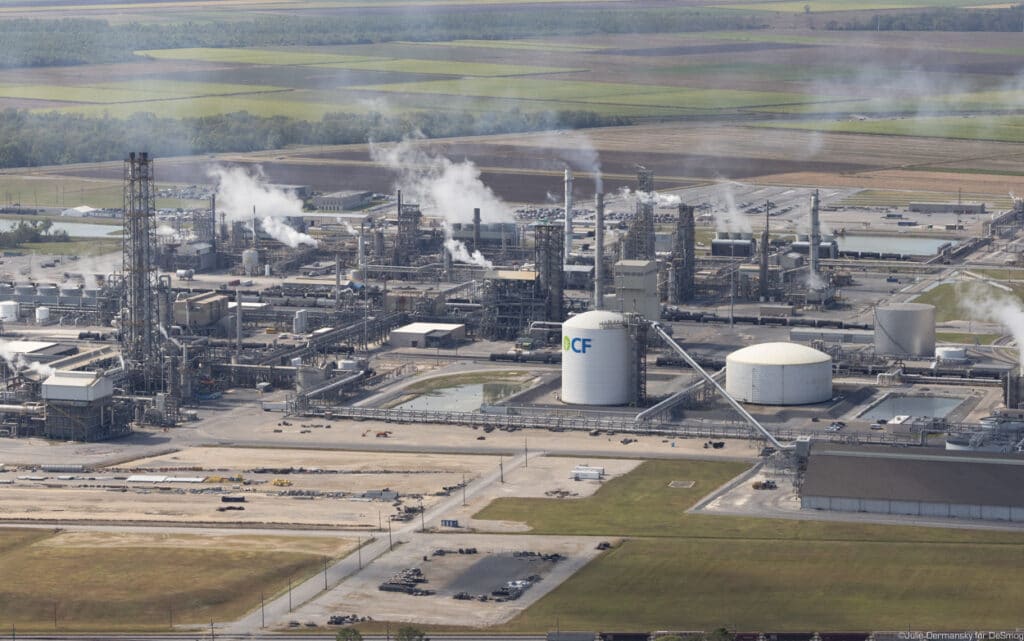
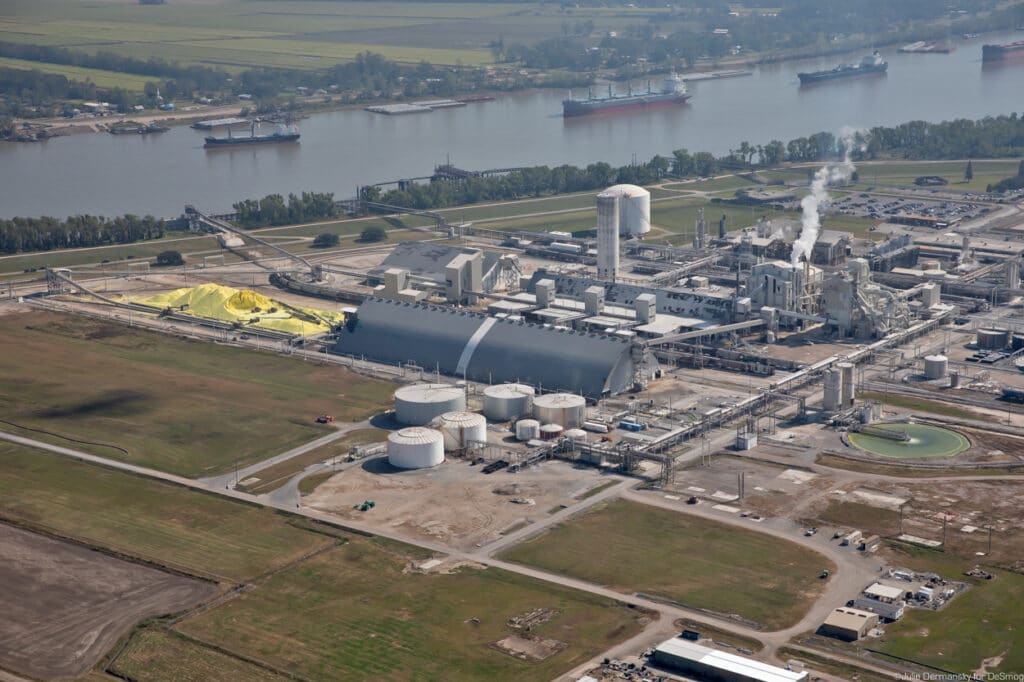
A Community With the Nation’s Highest Cancer Risk from Air Pollution
The Concerned Citizens of St. John has been particularly focused on air pollution impacts from the DuPont-Denka chemical plant in Laplace, Louisiana, less than a mile from many group members’ homes and a half a mile from the Fifth Ward elementary school. As the facility manufactures the synthetic rubber known as Neoprene, it emits numerous toxic chemicals, including chloroprene, a likely human carcinogen, and has been doing so for over fifty years. It is currently the only facility in the nation that releases chloroprene.
In 2016 the community group learned the EPA had determined that residents near the DuPont-Denka plant have the highest lifetime risk of cancer from air pollution in the country, nearly 50 times the national average. That data came from a 2015 EPA National Air Toxics Assessment, which evaluates air contaminants and estimates health risks.
Since that time, the plant, working with state and federal regulators, has reduced chloroprene emissions as much as 85 percent, but even those major cuts are not drastic enough to reach the level EPA recommend as a safe limit for lifelong chloroprene exposure.
Currently, there is no legal standard for chloroprene, let alone one that would meet the EPA’s recommended safe limit. However, in June the agency started the process of creating a rule to regulate that chemical. While Taylor welcomes this progress, he points out that the process will take years—years that his community will continue breathing this pollutant. Taylor and other members of his group told Regan they want these emissions stopped now, unless the DuPont-Denka plant can prove they are not harmful to surrounding residents’ health.
Community members say they are sick of having to prove how hazardous the DuPont-Denka plant’s emissions are. They believe that the 2015 EPA data showing the risk of continued exposure ought to be enough for federal action now. Not to take immediate action, Taylor told me, is like perpetrating “genocide” because the chemicals the plant releases are killing people.
The Threat of Another Petrochemical Plant in St. James, Louisiana
Taylor’s experience resonates with Lavigne, one of this year’s Goldman Environmental Prize winners for her efforts spearheading the fight against Formosa’s multi-billion-dollar plastic manufacturing complex proposed for her community of St. James. The area is already home to several petrochemical plants and oil storage tanks, and she fears that if built, the Formosa complex will turn the area’s already degraded air quality into a “death trap.”
Many of Lavigne’s neighbors have died of cancer or respiratory illnesses associated with the types of emissions released from the existing industrial facilities in St. James. She pointed this out to Gov. Edwards during a recent video chat facilitated by the environmental advocacy group Earthworks. On the call, the Governor, who was attending the United Nations climate summit in Glasgow, Scotland, reiterated his support for Formosa’s project, but added that he is open to considering new information that could change his mind.
“The Governor’s continued support of Formosa is shameful,” Lavigne told me the day after the call. “He continues to let industry turn St. James into a sacrifice zone.”
According to a report by ProPublica, emissions in the area closest to the site of Formosa’s proposed complex already contain more cancer-causing chemicals than 99.6 percent of industrialized areas nationwide.
Regan met with Lavigne and members of RISE St. James after his visit with Taylor and the Concerned Citizens of St. John. She took him to meet residents living next to oil storage tanks, that is are in close proximity to the terminal at the end of the controversial Bayou Bridge pipeline. It carries oil from North Dakota to the Gulf Coast And was built despite the community’s concerns that the area is lacking an emergency evacuation route out for communities that otherwise are served by a single road.
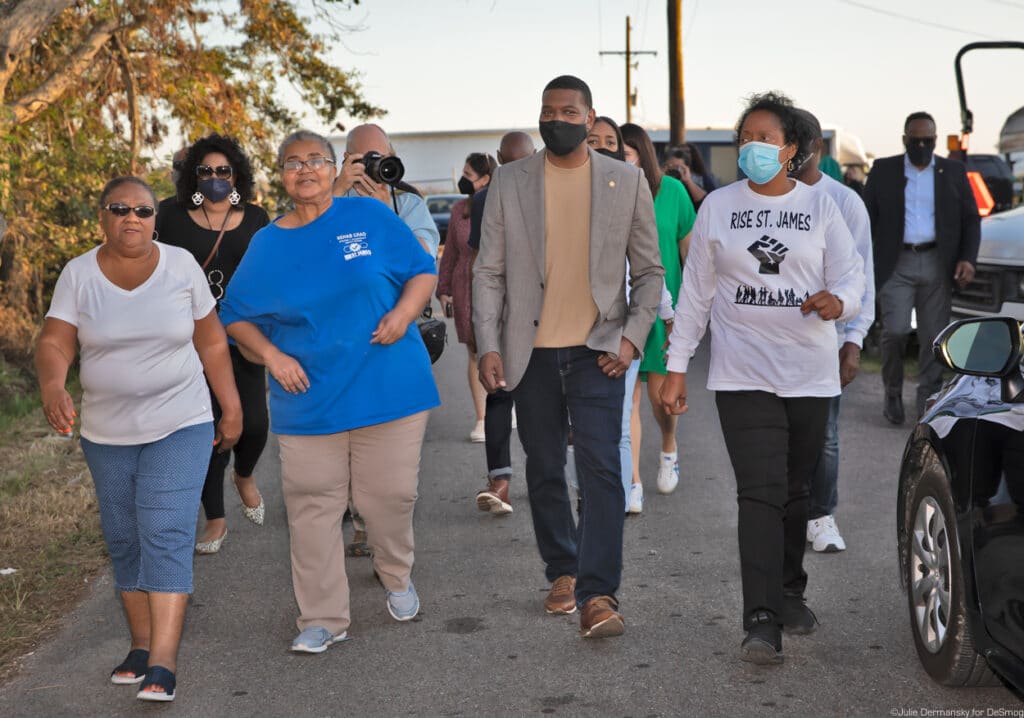
EPA Letdown
One thing both Taylor and Lavigne were disappointed about Regan’s environmental justice tour was that media access was extremely limited by the EPA. Though I was invited by both of them to cover their meetings with Regan, EPA press handlers prevented me from doing so.
While the EPA did not explain why this was the case, a common reasoning is that the community would speak more freely without the media present. But at least for these Cancer Alley community leaders, nothing could be further from the truth. They say that it is through the media that they have gotten the world to hear about their plight. “We want as many people as possible to know what is going on here,” Talyor said.

Subscribe to our newsletter
Stay up to date with DeSmog news and alerts


